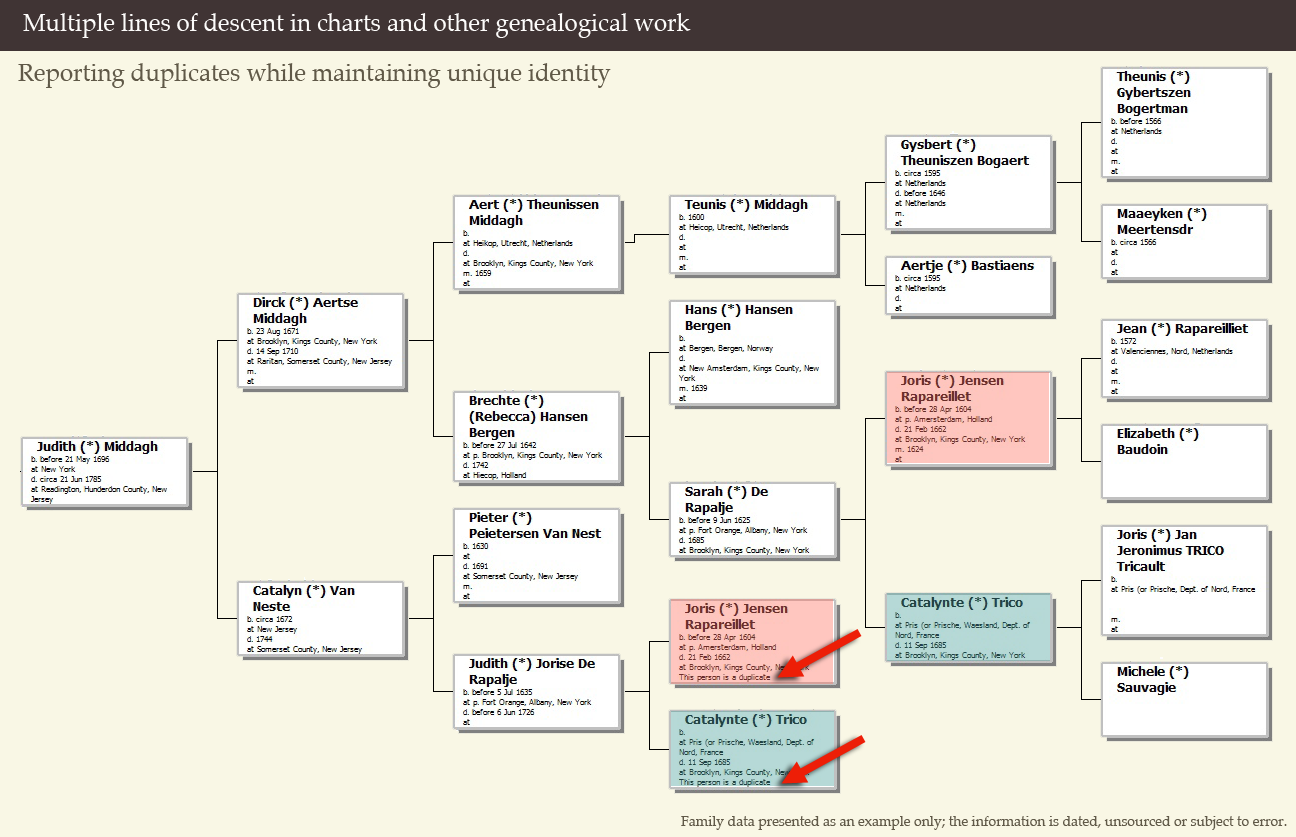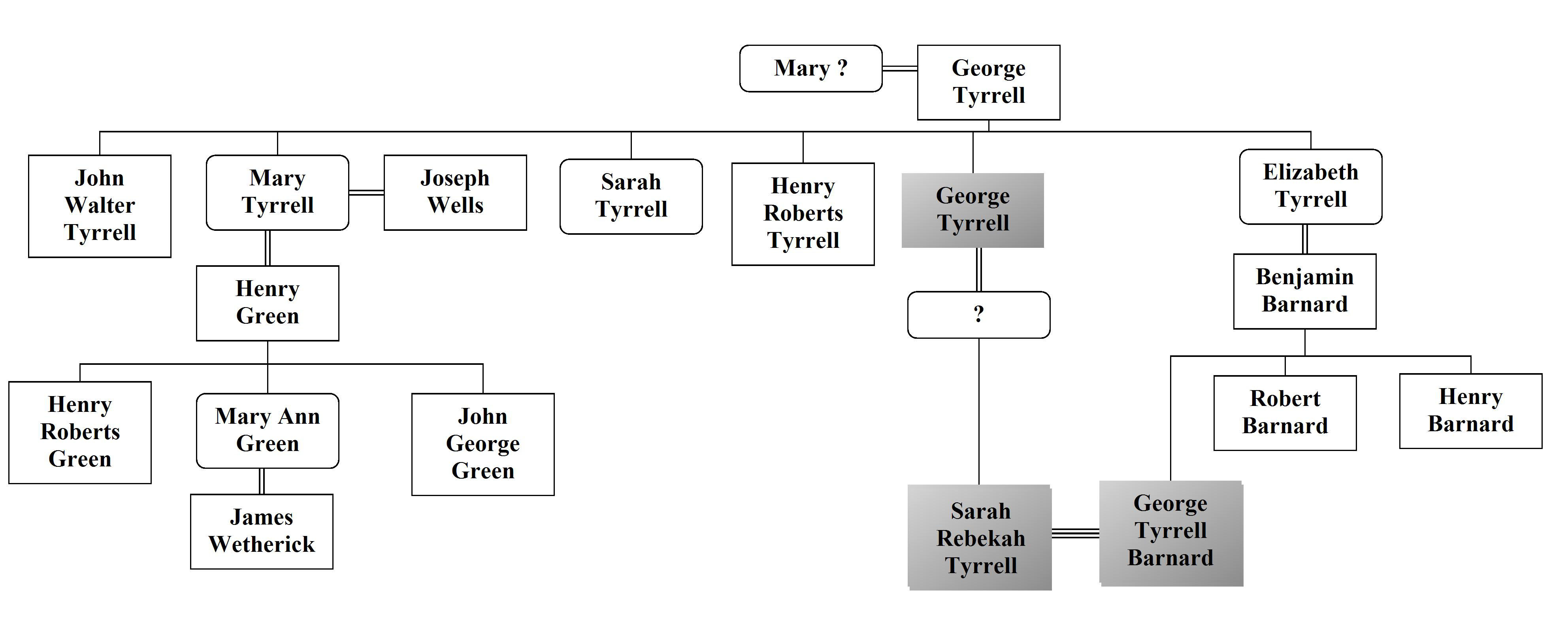
Deep in my families history (1600's or there abouts) our family split in two. About three or four generations later two distant cousins got married creating a split / rejoin.
G.G.G.Parents A
+---------+---------------------------+
G.G.Grand Parent G.G.Grand Parent
| |
G.Grand Parent G.Grand Parent
| |
Grand Parent Grand Parent
| |
+------+-------+ +-------+-------+
Aunt Parent A - - -+- - - Parent B Uncle
|
+------+------+
Child A Child B
... ...
So in this small example, the family splits in two at G.G.Grandparents and then rejoins later when Parent A and Parent B marry.
About 8 years ago I tried to find a software package which could model this and failed. Has anything happened in the intervening time?
Sorry I'm just asking in SE without doing much research, but I spent a lot of effort last time without any success and I am sure there is someone out there who can point me to an excellent package!
@ColeValleyGirl: I'm looking for a piece of software that is able to print out such a tree/DAG (thanks @ACProctor) in high enough quality to display/frame. All software I tried before didn't seem to be able to display this as they seemed to support mainly variations of Ancestors / Descendants rather than an output of all the people that had been inputed.
@AdrianB38: Essentially, I want to see "everyone". The tree I have was put together by my grandfather, who probably had a lot more data/people, but I've only got the hand written tree which highlights this split. It's essentially a tree of my grandparents ancestors (including this split which is joined at a common ancestor) and descendants (me + my family). I'd like to reproduce this in the computer (there is about 400 years - hundreds of people).
@AdrianB38: Re your point about generations, yes, I have that issue. I think it's only one generation, might be two - i've not looked at the tree in a while. The split between families happened over about 150-200 years iirc.
I can write an SVG generator if I really need to (I'm a Software Engineer) albeit I'm aware such a "loop"/"dependency" is painful to program for, but I was hoping that there was something which could handle this.
Jamie asks for assistance dealing with duplicates that result from family intermarriages.
There are two notions at work (note 1):
Recognize that each person in your family tree is a unique individual--you do not want to duplicate identities about any of those persons.
Report the ancestry of each person consistent with the information you have developed. Each person in your family tree has a particular ancestry; you want to report about that ancestry.
In the chapter, "Basic Systems," Joan Ferris Curran CG, refers to this "one too many" circumstance as "multiple lines of descent." (note 2) That is to say, someone descends of the same person in more than one way!
While it might seem that these intermarriage conflict with notions of unique identity and unique ancestry, there are well documented solutions. The chart below is an example of a solution to the problem.
In this example (note 3) Judith Middaugh's parents are related. Both descend of the marriage between Joris Rapareillet and Catalynte Trico. Judith's father, Dirck Middaugh, is the great-grandson of Joris and Catalynte; Judith's mother is the granddaughter of the same couple.
The chart presents the solution to this challenge. It identifies each of the two entries about Joris Rapareillet and Catalynte Trico, one (of each) is marked "duplicate." The key here is that the reader is always referred to the primary entry for a complete and continuing information about Joris and Catalynte.
In this chart, the identification is made via names, dates and places. That identification could just as easily have been made by a reference number, graphic, etc. The important part is to make sure the unique identification is clear so that one entry (if you will, the primary entry) provides the complete and continuing information.

Jamie asks what software supports solutions.
Many software programs provide support for weeding out multiple lines of descent.
The information in the example/chart was printed from the software program, The Master Genealogist (v8), which I happened to have installed right now. (note 4) Were it not for a little computer glitch, I'd have posted more about support provided by other software programs.
So many of the vendors offer free trials or free versions today. If it has been a few years since you've taken a look, why not take several of them out for a spin?
Jamie clarifies and comments, "I am actually looking for software [that provides the reporting of duplicates (rather than weeds them out)]."
Beauty really is in the eye of the beholder! I've just sent a note to a genealogy charting engineer/expert, referring him to the question.
Notes and References:
I often want to present such splits and joins in a family tree in chart form, because the visual representation is easy to understand. It is possible to produce such a chart using genealogy software, but not without 'cheating'. The chart below was created in Family Tree Maker 10 to support a discussion of how property was passed down to the highlighted couple(1st cousins):

It is a two step process:
1) Select people of interest. FTM allows removal of people from a chart, but if the database is large, it is quicker to export a subset to a new database.
2) Modify chart by dragging duplicate people so that the boxes are overlaid. FTM allows the repositioning of boxes.
Both steps are a fiddle and may defeat less tech savy users. Other software has similar tools. A chart option that highlights a particular cousin marriage and overlays the boxes automatically would be a valuable feature, but I have not seen it implemented in any software.
If software development is an attractive option, I think it should be straightforward to create a graph visualization in something like d3. I wouldn't advocate building any tools that require data entry, but it wouldn't be hard to parse a GEDCOM file of your family DAG & create a visual representation. Adapting some variation of this example might be a place to start.